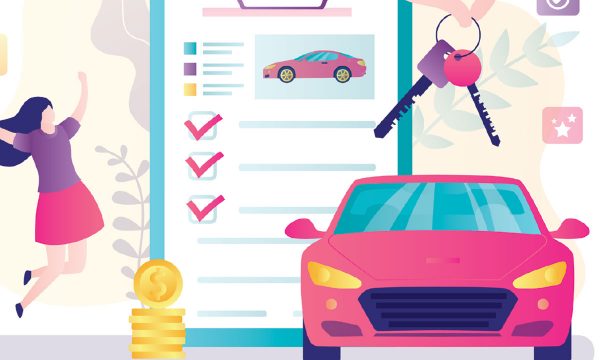Focus on mastering basic rules of business to improve your bottom line.
The following four rules of business can act as a template for charting and planning overall performance improvement for your variable and fixed operation.
As a dealer principal or general manager, consider writing the following four rules on a wall-sized whiteboard in your office or meeting room. Divide the whiteboard into four vertical columns or “buckets” with each rule.
In each vertical bucket, list all of your ideas and initiatives to increase dealership performance. Documenting these visuals will allow you to decide which one of your buckets is current priority and opportunity. From the list of initiatives within each bucket, you can then prioritize your top three.
RULE #1: Keep your customers
Improve your lease penetration.
Set a target penetration and ensure that your sales consultants, sales managers and financial services managers all understand the inner workings, build, terminology, benefits and presentation of a retail lease. Reward sales consultants for increased lease penetration.
Focus on Portfolio Management of Finance, Lease and Cash customers (not just lease). Use both people and technology (CRM, equity tools) to establish a contact schedule for connecting with customers throughout their ownership/lease experience (phone, e-mail, text).
Establish call scripts that have a purpose. Contacting lease customers three months prior to maturity is far too late — set lease maturity contact benchmarks at 12 months (latest). Give customers incentives for visiting the dealership for an Options-Review Meeting (free vehicle detailing, free oil change, etc.).
Plan and schedule upgrade sale events throughout the year. There are numerous companies that specialize in planning complete three- to four-day marketing executions and sale events; scraping and contacting the dealership’s customer database via direct mail, web, e-mail, text and phone.
Implement monthly or quarterly Service Department Car Care Clinics for both new and used vehicle customers that have taken recent delivery of a new(er) vehicle.
Implement Service Department appraisal campaigns.
Each day target four- or five-plus-year-old vehicles in the Service Department that may be entering an equity position. Provide a no charge Pre-Appraisal or Market Analysis with an offer to upgrade the customer’s present vehicle to a new one.
Plan exclusive customer appreciation events such as BBQs, fishing tournaments, off-road events, Jeep club, performance driving schools, car rallies, wine tasting, a Broadway musical, Hell’s Kitchen cook-off, etc.
Implement a dealership/dealer group rewards program for sales, service, parts, accessories and collision.
RULE #2: Get new customers
Marketing has become much more complex. Some dealerships/groups have an internal marketing department while others partner with established agencies (e.g.: my editor/publisher, Universus Media Group).
However, if your group has an internal marketing department, what is their specialty and expertise? Digital? Radio? Television? Sale events? Customer appreciation events? Community events? Sponsorships? Social media? Artificial Intelligence? Non-prime?
Few marketing departments have expertise in all; doctors, lawyers, accountants have specialties.
Many progressive dealer groups have established a marketing department and a separate social media department that work hand-in-hand or have outsourced to experienced, reputable and proven agencies.
At the very least, as social media continues to exert flex (and now Artificial Intelligence), it may be time for a dealer principal or General Manager to take a deep dive into social media and to really gain a first-hand understanding and appreciation of its capabilities; some have spent their time and money to enroll in two- and three-week training programs in Silicon Valley.
Each sales consultant should also have a minimum of one (ongoing) prospecting initiative to bring in new customers. Initiatives can be divided into high tech or low tech. High tech includes marketing through personal social media, YouTube, Facebook Marketplace, etc.
Low tech prospecting includes initiatives such as joining clubs and associations, sponsoring community festivals and events, visiting local businesses, contacting companies with preferred manufacturer preferred pricing, etc.
RULE #3: Maximize every transaction
Do your dealership and sales consultants provide a purchase experience that builds value and excitement in the brand, the vehicle, the dealership and the sales consultant?
Have you justified the price of your new or used vehicles and earned it? Has your dealership provided credible reasons for charging the MSRP that make customers feel more at ease (e-mail me if you would like an example of such a document)?
Have you provided customers with market comparables on used vehicles to hold your price? Does your dealership explain the trade-in appraisal process; the combination of trained appraisers, market-scrape technology and nationwide online auctions?
Does your dealership have the appraiser present the trade-in value with confidence and expertise to the customer? Does your sales manager meet every customer within the first 10 minutes of them visiting your dealership?
Have you provided a payment-based proposal (multiple payment options) to every single customer that has selected a vehicle? Have you included (and disclosed) an OEM extended warranty or vehicle protection package in your payment options? Have you offered and suggested vehicle accessories to personalize the customer’s vehicle or outfit it for their work or weekend living?
Does your sales manager attempt to secure more money from the customer if the deal is below MSRP or below asking price? At time of vehicle delivery, are customers properly introduced to the service department to secure the first service appointment?
Do you have a dealership/dealer Group rewards program for all departments that incentivizes customers to continue to do business with your company?
RULE #4: Improve efficiency
Improving efficiency with dealership processes and customer flow ultimately enhances the first three rules and tremendously improves the customer experience.
How often is a showroom customer staring at white walls? This is an expression we use as a training organization when we observe showrooms that operate inefficiently;
- E-leads are forwarded to the sales manager first where they sit in their inbox too long while customers have already been replied to from a competitor;
- The sales consultant makes too many, unnecessary trips to the sales manager’s office for consultation while customers sit at their desk staring at “white walls”, sometimes for extended periods of time;
- Vehicle key fobs, dealer plates and the vehicles themselves are not set up for quick and easy access for presenting and demonstrating new and used vehicles;
- Trade-in appraisals are completed toward the end of the sales process instead of the beginning. Long after the demonstration drive, customers (and sales consultants) are forced to wait an additional half hour or more for the appraisal to be completed. This is one of the worst misuses of a customer’s time;
- Sales managers often take too long to create payment-based proposals, finishing a text or e-mail, talking to other staff members simultaneously, etc., again while customers stare at “white walls”;
- Customers often wait too long to transition to the financial services manager when a vehicle is sold.
Using the simple four rules of business as a template creates simplicity and clarity and allows you to more easily focus on your current areas of opportunity.












